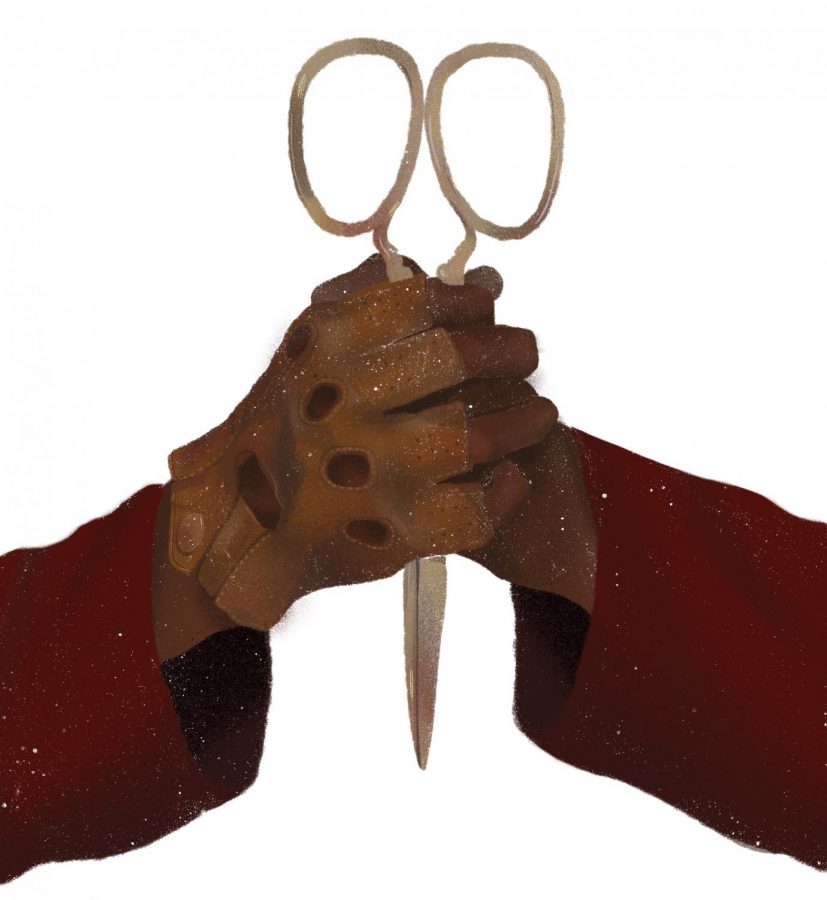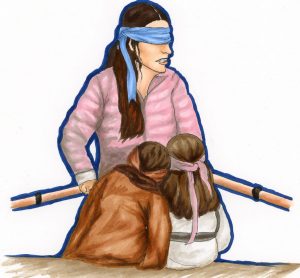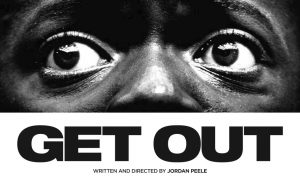“Us” catches America red-handed
April 19, 2019
Jordan Peele’s newest movie “Us” is a wonderfully dark and disturbing mosaic of scares, symbolism and social commentary that marks his second venture into the horror genre a success.
The highly-anticipated film follows the story of Adelaide Thomas (Lupita Nyong’o), her husband Gabe (Winston Duke) and their two children Zora (Shahadi Wright Joseph) and Jason (Evan Alex) in their struggle to escape a family of murderous doppelgängers — known as the Tethered — that arrive at the Thomas’ vacation home in sunny Santa Cruz.
While “Get Out” — Peele’s explosive, subversive directorial debut — exposed us to a metaphysical brand of fear, “Us” delivered a more instinctual terror that isn’t muddled by the genre confusion of its predecessor. “Us” is sufficiently creepy, maintaining atmospheric tension from young Adelaide’s (Madison Curry) first descent into the house of mirrors to the final confrontation in the tunnels deep beneath the Santa Cruz boardwalk. Especially nightmarish are the scissor-wielding Tethered, whose unblinking eyes, animalistic mannerisms and unsettling smiles make them distinctly inhuman despite their likeness to the characters, making them a more than adequate antagonist for the film.
Nyong’o is the star of “Us,” and for good reason — she brilliantly portrays Adelaide and Red (her Tethered counterpart) with a performance that captures both Adelaide’s paranoia and Red’s terror. Everything, from Red’s rasping, staccato speech to her unsettlingly puppet-like gait as she pursues her victims — scissors at the ready — adds a distinctly terrifying element to “Us.” Joseph and Alex, in their film debuts, demonstrated an acting capability beyond their years, able to adapt to two starkly different personas with ease.
As a horror film, “Us” isn’t entirely a gore-fest, despite its premise. That isn’t to say that the movie doesn’t have its fair share of violent moments, as it still boasts a few particularly bloody scenes. Instead, “Us” cultivates fear in its viewers by playing with audience expectation and motifs.
“Us” never falters in its pacing, but is simultaneously suspenseful to keep the audience at the edge of their seats. “Us” feels distinctly like a Peele creation. It is a film that only he — the actor-comedian-director triple threat — could have crafted, with its unexpected, yet not unwelcome, juxtaposition of humor and horror. While most movies try to walk the line between the two genres by using satire (the “Scary Movie” pentalogy comes to mind, where the only impactful death is the death of Carmen Electra’s career) or in a way that feels forced and clumsy (i.e. the almost formulaic Marvel banter), Peele balances the screams and laughs seamlessly. His jokes, self-aware and ingenuous, still land, without ruining the movie’s carefully-crafted tension.
The film is aesthetically and
atmospherically satisfying, with white rabbits, golden shears and copious accents of red transforming the film into a visual treat. Peele plays with shadows and reflections to emphasize the contrast between us and the Tethered, especially in scenes revolving around Adelaide’s childhood flashbacks. “Us” also utilizes repetition to steer the audience’s attention, such as how Jeremiah 11:11 is a repeated motif throughout the film. The actual verse both illustrates the plight of the Tethered while also representing a palindrome, or perfect mirror, just as each character is mirrored.
It’s clear that Peele drew from classic horror films and celebrated directors, masterfully paying homage to the genre. The unnerving, bordering on comedic one-liner by Jason, “There’s a family standing in our driveway,” was inspired by the tagline “They’re here” of 1982’s “Poltergeist.” Similarly, a gorgeous shot of Adelaide traveling down an escalator is reminiscent of Spike Lee’s signature dolly shots, a director who Peele just worked with on the biographical crime film, “BlacKkKlansman.”
In addition to the visuals, Peele demonstrates a command of the sonic. Any sound can become a tense reverb under the hyper focused tuning of Peele — the flickering of a fluorescent light, the churning of a rollercoaster, the clicking of a lighter. Among other ominous tracks from the film, the remix of “I Got 5 On It” serves as a minimalistic but haunting backtrack that sticks in audience’s heads long after the movie ends.
As the credits rolled, our first reaction was “Wow.” But it was immediately interrupted by “What?” We were left in awe of the abstract, visceral beauty of “Us,” but were lost in the ambiguity. It’s the details that transform “Us” from a solid horror movie into an intricate social commentary. As in “Get Out,” Peele weaves bold political statements and identifiable references into his movie, but it’s a loose thread, leaving the audience stunned at the amazement of what they had just viewed, but also questioning given the ambiguity of certain themes/symbols. Audience theories have run rampant, with some speculating that “Us” is a reflection of everything from economic inequality to sexual fertility. However, the only concrete information comes from hints from Peele given during interviews.
“I was stricken with the fact that we are in a time where we fear the other, whether it is the mysterious invader that we think is going to come and kill us or take our jobs or the faction that we don’t live near that voted a different way than us,” explained Peele in an interview with Refinery29. “We’re all pointing the finger and I want to suggest that [when] making a monster, we really need to look at our face. Maybe the evil is us.”
“Us” takes the audience down a rabbit hole of horrors and humor, landing somewhere between classic and avant-garde while further establishing his trademark genre bending.







